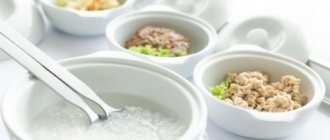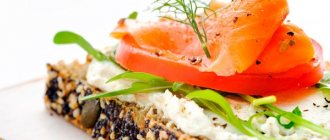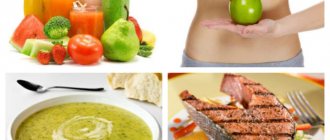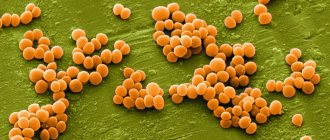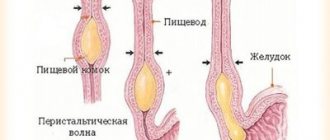Excessive accumulation of gases in the intestines causes flatulence. This condition puts a person in an awkward position, causes discomfort and is a sign of a disease of the digestive system. It is known that food products provoke this process. Gas-forming products are found in the daily diet of any person. To avoid flatulence, you need to know which foods to avoid or reduce their dose.
Why do some foods cause gas?
Gas-forming foods (the list is presented later in the article) contain large amounts of dietary fiber. Abuse of cabbage, legumes, dairy products and offal can cause intestinal upset. Flatulence occurs if the diet is dominated by dishes made from vegetables containing a large amount of fiber. In this case, abnormal metabolic activity of the intestinal microflora is observed. With the systematic consumption of spicy, salty, fatty foods, the natural process of breakdown and absorption is disrupted. Gas formation is often formed due to dysbacteriosis.
Legumes contain a large amount of:
- pectin;
- raffinose;
- stachyoses.
These carbohydrates are not digested in the small intestine and stomach. They enter the large intestine in an undigested form. When these substances are broken down by bacteria, gases are formed. Flatulence is often observed in people suffering from food intolerance to certain categories of foods. The causes of the pathology can be considered celiac disease and other diseases of a genetic nature. Experts do not recommend eating foods that contain emulsifiers, flavor enhancers and biogenic amines. Substances negatively affect the functioning of the gastrointestinal tract.
Bloating: causes
Gas-forming products do not always cause bloating. Some diseases can also cause this phenomenon:
- Oncology;
- diseases of the gastrointestinal tract;
- digestive problems;
- air entering the stomach while eating;
- dysbacteriosis;
- slagging, intoxication.
While eating, we often have conversations - with friends and relatives. It is undesirable to do this, since during a conversation air enters the stomach, causing gas formation. The same applies to drinks that we drink through a straw - it is undesirable to do this.
Important! If you suffer from a similar problem, you need to completely reconsider your diet, since basically it is food that causes gas formation.
Some foods may be difficult to digest. Over time, such undigested residues are processed by bacteria, causing gas formation. Pathology can also occur due to a lack of enzymes. The best option for such problems is to stop eating foods that cause fermentation.
List of foods that cause gas
Cabbage
First of all, it is necessary to abandon cabbage of any variety, which, despite its obvious benefits for the body, in particular for intestinal motility, causes very active fermentation within the gastrointestinal tract. This is about:
- white cabbage;
- heads of cabbage red;
- Brussels;
- broccoli;
- Beijing;
- colored, etc.
Legumes
The second category of food that activates gas formation in the intestines is legumes. We all love this category of food, as it produces many hearty dishes that supply vegetable protein and do not harm the figure, however, some, after eating a meal with the addition of these ingredients, cannot leave the house for about several hours:
- lentils;
- beans;
- beans;
- soy;
- peas, etc.
Vegetables
Some vegetables, also represented by coarse fiber, have a similar effect on the formation of gases. They are incredibly useful, however, moderate their use if you are prone to flatulence:
- swede;
- turnip;
- carrot;
- celery;
- onion.
Mushrooms
Mushrooms are another food that can cause reactions such as bloating, flatulence and abdominal pain in some people, especially when consumed in large quantities. Additional problems arise when consuming mushrooms that are cooked in violation of the temperature regime, or that are poorly washed.
Dairy
Dairy products are another category of food that often provokes the accumulation of gases and their uncontrolled release. People who are unable to digest milk sugar, lactose, should be especially careful when consuming them. The required inability is associated with congenital deficiency in the production of the so-called lactase enzyme. As a result, in addition to flatulence, the desired citizen will also be persecuted:
- stomach ache;
- diarrhea;
- loud rumbling, etc.
However, milk can have a negative effect on an absolutely healthy person, since, strictly speaking, its usefulness today is generally in question.
Fruits
Some fruits provoke gas no worse than cabbage. This category includes:
- apples, especially green ones;
- pears;
- grape;
- mango;
- apricots;
- watermelons;
- peaches, especially velvety varieties;
- cherries, as well as sweet cherries;
- a pineapple.
As you can see, the usual fruit plate in front of the TV can be a big problem for people with sensitive stomachs. Try to exclude the products listed above from it, if possible, after first conducting an experiment to see which items cause the reaction we are considering in you.
Flour products
Bakery products, as well as confectionery and grain products, are also very successful in causing the formation of gases in the intestines and fermentation, largely due to the high content of carbohydrates, which break down and digest so slowly that fertile ground is created for rotting and the formation of gases. This category includes:
- white flour products;
- rye products;
- mixed products;
- sweet confectionery names, etc.
Animal protein
In some cases, flatulence is also caused by animal products, which are, in principle, difficult for the human body to absorb. This is about:
- fatty and lean fish;
- poultry and animal meat;
- eggs, etc.
Modern scientists are finding more and more evidence every day that the human body spends much more energy on digesting the products listed above than it should, while the resulting benefit is disproportionate to them, even when we are talking about a completely healthy person. What can we say about a person with a sensitive intestine, for whom any, even small, irritant that enters the digestive system causes serious problems in the functioning of the organ of interest to us:
- increased gas formation, leading to an enlarged abdomen;
- abdominal discomfort;
- flatulence;
- diarrhea;
- constipation
Protein products of animal origin, due to their high fat content, most often provoke precisely the following combination of consequences:
- flatulence;
- constipation.
The desired circumstance is fraught with many dangers, since with constipation, gases are formed not only from rotting food, but also from already processed feces, only this time they are much more toxic. The intestines, under their pressure, stretch to an incredible size. To alleviate the situation, you have to use laxatives, sometimes constantly.
Vegetable oils
Vegetable oils are very beneficial both for the whole body and for the intestines, however, sensitive organisms may experience many inconveniences if they are consumed in quantities other than the minimum norm. In addition, other products prepared on their basis will cause a similar reaction. This is about:
- sunflower oil;
- olive;
- flax;
- pumpkin;
- margarine;
- mayonnaise, etc.
Beverages
The next category is no longer solid food, but carbonated and non-carbonated drinks:
- sweet;
- mineral;
- beer;
- kvass;
- strong alcohol;
- wine;
- alcoholic drinks flavored with sugar and gases at the same time.
It doesn’t matter whether the drinks listed are artificially carbonated or not, they will have the most negative effect on the intestines. If you need to consume healthy mineral water, you should give preference to still mineral water, the range of which is slightly less wide than carbonated water, but is still available. As a last resort, you can release the gas from the bottle yourself.
How to prepare for an abdominal ultrasound
Before undergoing an ultrasound examination of the abdominal organs, special preparation is required. Do I need to follow a diet and what does it consist of?
Ultrasound examination of internal organs helps in diagnosing various hidden pathologies. Properly carried out measures to prepare the digestive tract play an important role, because the accuracy of the data obtained during the procedure depends on them.
This material provides the most up-to-date information about nutrition before undergoing an abdominal ultrasound: what are the features of the diet depending on the time of the procedure, is it allowed to drink water? What other activities are there to prepare for this examination? What is a slag-free diet , what is its meaning?
To do this, let's answer the following questions:
- why do you need a diet before an ultrasound;
- how to prepare and what to eat before an ultrasound of the gastrointestinal tract, what foods to exclude;
- nutritional habits depending on what time of day the procedure is scheduled for;
- whether ultrasound is performed on an empty stomach or not;
- Is it possible to drink water, coffee, tea and kefir;
- sample menu for three days before the ultrasound;
- slag-free diet: why it is needed and what it is;
- a few words about other preparations before the examination .
Nutrition before examination of the stomach, liver and kidneys
Plays a major role in preparing for an ultrasound. This means that the doctor at the appointment must talk in detail about the principles of nutrition , as well as give a list of allowed foods and those that need to be excluded for a while (within three days before the diagnostic procedure).
This is done so that the doctor obtains reliable results that reflect the picture of the condition of the internal organs. The quality of the resulting image is affected by the air present in the intestines , so it is necessary to exclude all gas-forming products. Feces that accumulate in the large intestine do not allow one to assess the condition of this part of the digestive tract, so if the patient suffers from constipation , it is recommended to do an enema in the evening before visiting the doctor.
Before the procedure, you should not eat any food for 12 hours. During this time, the food taken has time to pass through all parts of the gastrointestinal tract and be removed outside.
What foods should you not eat?
There are a number of foods whose consumption causes excessive gas formation . Air accumulated in the intestines can seriously interfere with the visualization of organs during examination. Therefore, before an ultrasound, there is a certain list of foods that are excluded from the diet 3 days before the examination. This will reduce the amount of unnecessary air in the intestinal loops, and the signs of flatulence will be eliminated.
List of gas-forming foods that must be excluded 3 days before the procedure:
- sweet fruits;
- any confectionery products;
- bread and any other bakery products (they cause excessive gas formation and fermentation);
- strong drinks: tea, coffee, alcohol - not allowed in any form;
- milk and dairy products;
- fatty types of meat and fish (increased load on the pancreas and gall bladder);
- legumes (this includes peas, lentils, beans);
- fresh vegetables.
What is allowed
Of course, all patients are interested in the question: what can you eat before an ultrasound? The following products are allowed to be consumed without harming the examination results:
- cereals – buckwheat, oatmeal, barley (porridge should be cooked exclusively in water);
- chicken and veal (lean meats);
- boiled eggs;
- low-fat cheese;
- low-fat varieties of fish.
Fruits and vegetables, despite the fact that they are part of a healthy diet, cannot be consumed before ultrasound diagnostics. The situation is the same with bananas, since many questions arise about this particular fruit. They contain a lot of sugar, which triggers fermentation processes in the intestines. If there are disturbances in the functioning of the digestive organs, this can adversely affect health.
Sweets also cause excess gas. This is especially true for those people who suffer from flatulence. It is best to cook dishes in the oven or steam; you can also boil foods.
How many hours before an ultrasound should you eat?
It is best if the examination is scheduled for the morning. In this case, it is most often possible to obtain reliable results about the structure and condition of the abdominal organs, since the time interval is observed - 12 hours from the last meal to the ultrasound. On the eve of the study, dinner should be eaten no later than 8 pm (for an easier bedtime). A heavy dinner is not recommended: it creates additional stress on the gastrointestinal tract. A light meal would be optimal.
If a diagnostic procedure is prescribed for a patient in the afternoon or evening, then everything depends on the condition of the patient’s body. If a patient has diabetes mellitus , then it is impossible to completely prohibit him from eating before the examination . In this case, the doctor prepares the food for him, taking into account the severity of the disease. In other cases you can have a light breakfast , after which you should refrain from eating. In any case, ultrasound is performed on an empty stomach: the interval between the last meal and ultrasound should be at least 7-8 hours.
Can I drink the water?
The patient is not recommended to drink any liquids immediately before the test . The last drink of water should be 1-1.5 before the examination. In this case, the results will be most reliable.
This rule does not work only in one case : when you need to look at the organs of the urinary system, namely the bladder. In this case, the doctor tells the patient how much liquid he needs to drink before coming for an ultrasound. Liquid enters the bladder and stretches its walls; in this state, its contours and structure of the walls are better visualized. In other situations, fluid is excluded immediately before the study.
It is advisable to abstain from coffee during all three days of preparation for the examination. This is due to the following effects of caffeine:
- Increased gas formation is observed. Caffeine has a relaxing effect on the wall of the intestines and stomach, resulting in a decrease in the rate of peristalsis in these organs.
- Drinking coffee stimulates the production of gastric and duodenal juice. Its presence in the lumen of the gastrointestinal tract can negatively affect the results of the examination.
- The absorption of nutrients and water slows down under the influence of caffeine , which can also affect the quality of the examination.
Fermented milk products should be completely abandoned for three to four days before this medical procedure. Kefir, fermented baked milk and other similar products can interfere with the procedure: they cause gas formation and fermentation in the intestine, which makes it difficult to visualize organs using an ultrasound probe.
If an ultrasound is scheduled, then you should stop drinking any alcohol three days before the ultrasound. It has a toxic effect on the body, and taking it can distort the results of the examination.
The patient is also not allowed to drink drinks with a high content of gas and sugar due to the fact that they cause excessive gas formation.
Sample menu
An approximate diet before undergoing the examination is as follows:
| Breakfast | Snack | Dinner | Afternoon snack | Dinner | |
| 1 day | Oatmeal with water, one hard-boiled chicken egg, green tea | A few slices of low-fat cheese | Buckwheat porridge with boiled pollock. Weak black tea | A plate of grain porridge | Steamed turkey fillet with pearl barley porridge. Green tea. |
| Day 2 | Barley porridge with water, weak black tea | Dry biscuits | Boiled veal, buckwheat porridge. Unsweetened dried fruit compote | One hard-boiled egg | Barley porridge with lean fish. Green tea. |
| Day 3 | Two soft-boiled eggs, green tea | A few slices of low-fat cheese | Chicken baked in the oven with barley porridge. Green tea | Dry biscuits | Steamed chicken. Drink a glass of warm water. |
Conclusion
Preparation for any ultrasound examination is very important. This allows you to get an accurate image of the internal organs and not miss the disease. The doctor or specially trained nurse must talk about nutrition before the study, and the patient must follow the recommendations given to him. Only in this case can we expect to obtain reliable results about the state of the internal environment of the body.
Product groups according to the degree of influence on gas formation
However, all of the listed gas-causing products affect the course of this process to varying degrees. In other words, their influence can be divided into three main groups. Let's look at which ones in the table below.
Table 1. Categories of gas-forming products:
| Gas formation is insignificant | Gas formation is moderate | Strong gas formation |
|
|
|
It must be said that the lists presented above, unfortunately, did not cover every product that could cause the reaction we are interested in, since each human body is individual, and their diversity simply would not fit into one article. It is unknown how exactly your gastrointestinal tract will manifest itself in this or that case, what reaction it will show to this or that product.
Cruciferous
Photo by Christophe Dion / Unsplash
Cruciferous vegetables like broccoli and cauliflower are common foods that are associated with bloating and gas. When cooked and chewed, these plants release glucosinolates, sulfur-containing organic compounds.
Research shows that many gut bacteria ferment glucosinolates into ferrous sulfates and ferrous ions. In the future, these substances can turn into hydrogen sulfide, which causes the gases to acquire an unpleasant odor.
On the one hand, glucosinolates feed probiotic bacteria that naturally live in the human intestines. These bacteria include Lactobacillus and Bifidobacterium. On the other hand, a gut with too many sulfate-reducing bacteria like Desulfovibrio can increase the production of hydrogen sulfide, which causes a particularly unpleasant odor.
Using the Atlas Microbiota Test, you can find out if you have too many Desulfovibrio bacteria in your gut, which are responsible for producing hydrogen sulfide.
Wrong food combination
Sometimes products that normally do not form an accumulation of gases can give such an effect due to the incompatibility of some components with others. And then, in combination with each other, the products are gas-forming. The list of such combinations is as follows:
- eating flour and kefir at the same time;
- combination of eggs and fish in one dish;
- consumption of fresh fruits and vegetables with thermally processed ones;
- combination of dairy and fermented milk products.
Knowing what foods cause gas if consumed incorrectly, you can build your diet so that similar foods are not encountered at one meal. This will help a person normalize the functioning of his body.
Does eating gas-forming foods affect the infant?
Many mothers who have given birth to children and have decided to breastfeed are wondering if they consume gas-forming foods, will this affect their child, who is currently only drinking breast milk?
The answer is as follows: no scientific patterns associated with the reaction of infants to certain foods consumed by the mother have been identified. Most often it goes like this:
- the mother suffers from flatulence from eating certain foods;
- the child takes over intestinal sensitivity from the mother and suffers from bloating at the same time.
Doctors advise basing each case on individual tolerance. If you notice that after you eat any product and feed it, your child suffers from stomach problems, exclude the item you are looking for from the diet.
Eating in public places
If your body has already adapted to a stoma, you can try eating out. It is important to eat regularly, as irregular eating leads to increased gas formation and diarrhea.
Once you figure out what kind of food suits you best, you can try going to a cafe or restaurant. It is better to prepare for your first visit to a public institution in order to feel comfortable. Start in a familiar place and try a simple dish.
When choosing dishes, you shouldn't be too careful, just be smart about it. Eat what you want, but don't forget that fatty foods and sauces can lead to problems. If you are afraid to eat certain foods, try them at home first to see how your body reacts to them, and then gradually introduce them into your diet. If you've drank a little alcohol before, you can try again, just start with a smaller dose than usual. This will help your body get used to it.
How to get rid of gases
Herbal tea helps with increased gas formation. For preparation, a collection of lemon balm, chamomile, peppermint, rosemary, dill, parsley, and anise is used. The herb is poured with boiling water, infused for twenty minutes and consumed before meals. An effective remedy for flatulence and intestinal problems is garlic. Throw three cloves into a glass of warm water and leave to steep for half an hour. You need to drink this drink twice a week. During an exacerbation - more often.
- Add ginger to your food as a seasoning.
- Take vitamins A, B and E.
- Before going to bed, you can drink activated charcoal. Calculation: one tablet per ten kilograms of weight.
- Include biological products containing beneficial bacteria in your diet. For example, bio-yogurt, lactovit.
- Among medications you can buy Espumisan.
Our general condition depends on what we eat. Watch your diet and your health will be fine.
It is important to know
- The diagnosis of obesity is made when the waist circumference in men is more than 94 cm, in women - more than 80 cm at any height. Correctly measure at navel level
- we must remember: we eat to live, and not “we live to eat”
- our recommendations are not a short-term diet, this is how every person who wants to be healthy, live longer and better should eat
- remember, for weight loss 80% is proper nutrition, 20% is physical activity
- physical activity can begin with walking for 30 minutes 3 times a week, gradually increasing the frequency and intensity of training (target speed - 6 km/hour, walk 3 kilometers every day in 30 minutes) is considered good intensity. Bicycling, swimming, running, and team sports also help well: volleyball, football, basketball, tennis. In good weather, it is preferable to exercise outdoors, in the morning, while you have the strength and the air is not yet heavily polluted with exhaust gases.
- the amount of fluid consumed is 30 ml/kg in healthy people, 40 ml/kg in obese people, but not more than 4 liters per day. Try to drink alkaline still water, the pH of which approaches 7. The alkaline or acidic state of water can be determined by special test strips for the oral cavity, which are sold in pharmacies. Here are some examples of water pH measured by us: Elbrussia - 7.0; Aqua Dombay – 6.5; Pilgrim – 4.5; springs of the Caucasus – 4.5; Mountain Top - 4.5 (from this it follows that preference is given to Elbrussia from Cherkessk and Akva Dombay)
- nutrition should be varied and balanced. Among protein products, preference is given to red fatty meats (beef, lamb), fish (preferably wild, not farmed and raised outside the wild), eggs, and fermented milk products. Eliminate fast carbohydrates completely (sweets, sugary drinks, white flour products). Replenish carbohydrates with vegetables and fruits, preferably fresh
- go to bed no later than 22.30, sleep duration is at least 7-8 hours. The sleep hormone melatonin is a fat burner. You need to sleep in a well-ventilated room with fresh air, at a temperature of +19 degrees
More information about the principles of a healthy lifestyle can be found HERE.
How to solve the problem?
If flatulence has become one of your constant problems, you should definitely consult a doctor. Unfortunately, gas-forming products before an x-ray can cause this phenomenon not only due to nutrition and love for carbonated drinks, but also to disruptions in the digestive tract. Only after an examination will the doctor be able to make a diagnosis and prescribe appropriate treatment. If the problems were caused by nutrition, then after these measures they will gradually subside, but if the problem is a disruption of the digestive tract, it will not be possible to eliminate the disease without a full examination.
